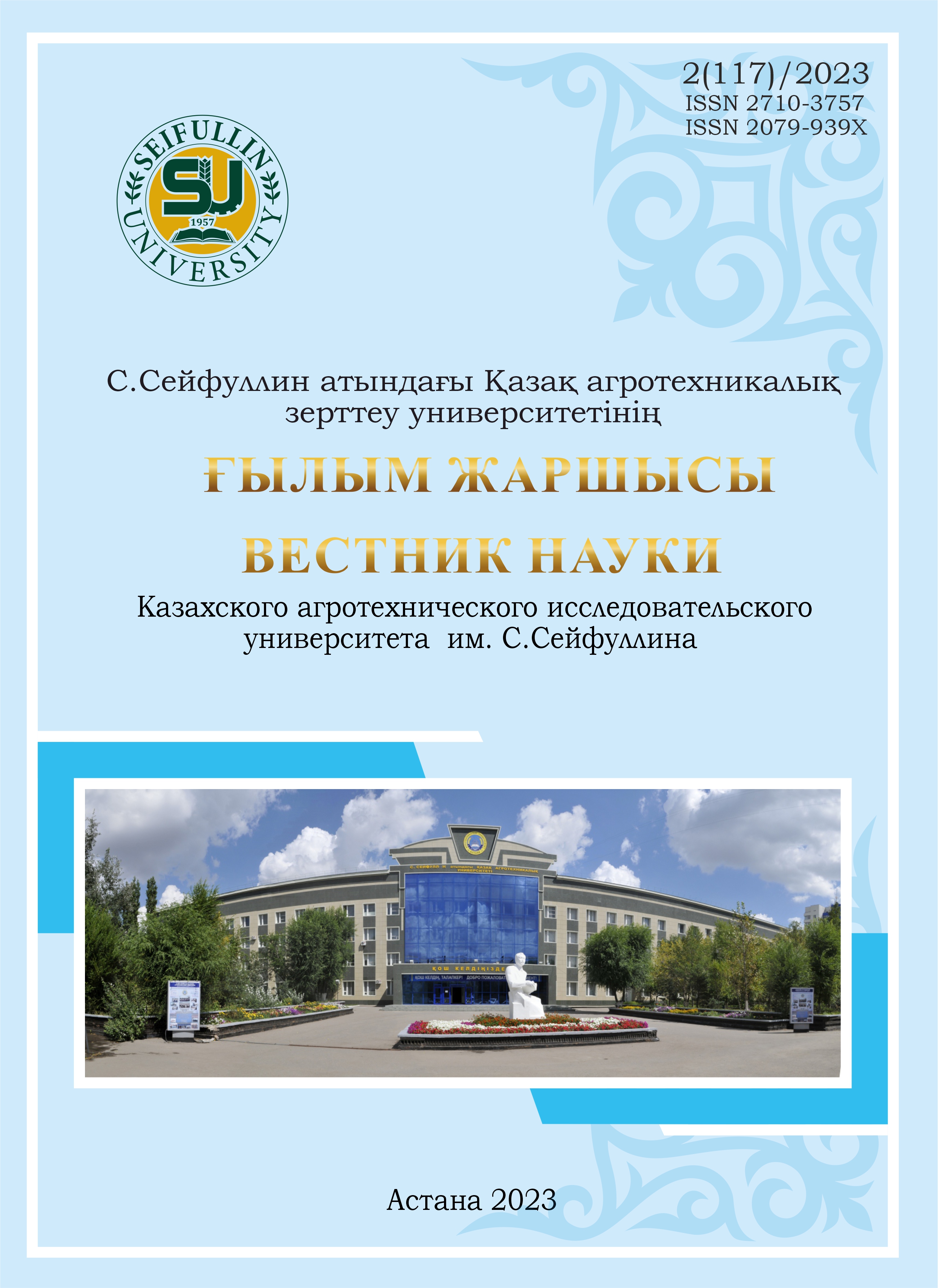THE LEVEL OF PHYTOPLANKTON DEVELOPMENT OF THE SALT LAKES «RAI» OF THE ALMATY REGION
DOI:
https://doi.org/10.51452/kazatu.2023.2(117).1392Keywords:
phytoplankton; mineralization; salt lakes; artemia; trophic status; dominant species; taxa.Abstract
The relevance of the study of small salt lakes is due to their scientific and practical significance. Scientific interest is aroused by the use of small salt lakes as model objects for studying the adaptation of hydrobionts to unstable conditions of the aquatic environment, primarily mineralization. The practical significance of studying these lakes is connected with the study of mineral wealth and the valuable biological resource of the gill-footed crustacean Artemia living in them. Phytoplankton is food for most planktonic crustaceans and plays a key role in the development of a particular species. This article provides for the first-time information about the phytoplankton of the salt lakes Rai № 1, Rai № 2, Rai № 3 and Rai № 4 located in the south-east of Kazakhstan. The selection and analysis of phytoplankton samples was carried out by the generally accepted hydrobiological method. The total mineralization of water in the lakes was determined using the Digital Salt Meter (Atago ES-421). The mineralization of water in lakes varies from 31.18 g/dm3 to 177.13 g/dm3. The algocenosis of the lakes was characterized by the development of 20 taxa from 6 groups of microalgae: green – 7, cyanobacteria (cyanoprokaryotes) – 6, diatoms – 3, pyrophytes – 2 and golden and euglenic 1 taxon each. The largest number of taxa were found in Lakes Rai № 1 and № 4. Thе dominant complex included Dunaliella viridis, Chlamydomonas sp., Oocystis submarina. Mainly halophilic and eurybiont species were observed in phytoplankton. The dimensional parameters of microalgae corresponded to the values available for nutrition at all stages of the development of the valuable biological resource artemia. The data obtained can be used to calculate the maximum allowable catches of artemia cysts in artemisian reservoirs by artemisian specialists.

